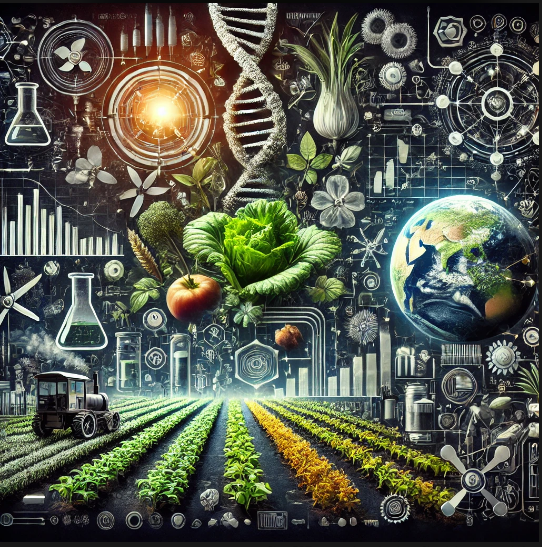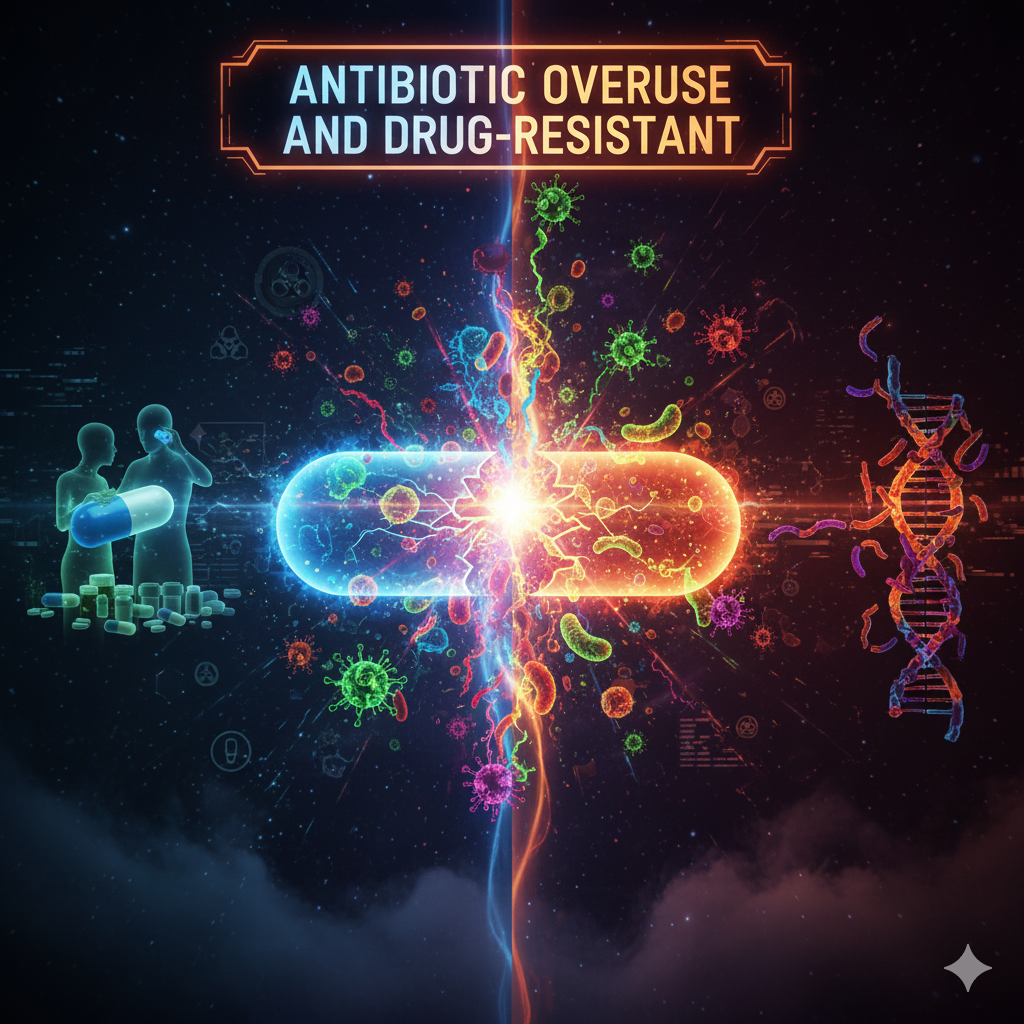Introduction
The world’s agricultural sector is currently at a critical juncture. As the global population continues to grow, farmers are being pushed to meet increasing food demands while grappling with challenges like climate change, diminishing natural resources, and the need for sustainable farming practices. In this context, biotechnology in agriculture offers transformative solutions that could not only revolutionize farming but also contribute to the growth of national economies, especially in developing countries.
Biotechnology in agriculture involves the use of genetic modification, molecular biology, and other biotechnological techniques to enhance the productivity and sustainability of agricultural practices. By improving crop yields, increasing resistance to pests and diseases, and developing more efficient farming methods, biotechnology offers significant potential to improve agricultural output and, in turn, boost economic growth. This article explores how biotechnology can positively impact the economy by increasing agricultural productivity, promoting sustainable practices, and creating job opportunities in both the short and long term.
1. Enhancing Agricultural Productivity
One of the most immediate and noticeable benefits of biotechnology in agriculture is its ability to significantly improve crop productivity. The global population is projected to reach 9.7 billion by 2050, putting immense pressure on food production. Biotechnology can help meet this demand by developing crops that are more resilient and productive.
- Genetically Modified (GM) Crops: Biotechnology allows the development of genetically modified crops that are resistant to pests, diseases, and environmental stresses. For example, crops like Bt cotton, which contains a gene from the bacterium Bacillus thuringiensis (Bt), are resistant to insect pests, reducing the need for chemical pesticides. This increases crop yields and decreases production costs, both of which are critical to economic growth.
- Drought-Tolerant Crops: Drought-resistant crops, such as genetically modified drought-tolerant maize, help ensure consistent yields even in regions prone to water scarcity. This can prevent crop failures and ensure food security in areas with unreliable rainfall, stabilizing agricultural output and contributing to economic stability.
- Improved Nutritional Content: Biotechnology also allows the fortification of crops with essential nutrients. Golden rice, for example, has been genetically engineered to contain higher levels of vitamin A, which can help address malnutrition in developing countries. By improving the nutritional content of crops, biotechnology can enhance the health and productivity of the population, indirectly benefiting the economy by reducing healthcare costs and improving the workforce’s efficiency.
2. Reduction in Production Costs
Agricultural biotechnology helps reduce production costs in a number of ways, making it easier for farmers to maintain profitability and contribute to the economy.
- Less Pesticide Use: By developing pest-resistant crops, biotechnology reduces the need for chemical pesticides, which can be expensive for farmers and harmful to the environment. By lowering the costs associated with pest control, biotechnology helps farmers reduce input costs, making farming more affordable and boosting profitability.
- Reduced Use of Water and Fertilizers: With the development of drought-resistant and nutrient-efficient crops, biotechnology can help reduce the amount of water and fertilizers needed for crop production. This not only lowers costs but also helps reduce the environmental impact of agriculture, contributing to long-term sustainability and economic resilience.
- Increased Farm Efficiency: With the use of precision agriculture techniques, farmers can optimize the use of inputs like water, fertilizers, and pesticides. Biotechnological innovations that integrate with smart farming technologies can enable more efficient resource management, leading to increased yields with reduced costs. This improves the overall profitability of farming, benefiting both individual farmers and national economies.
3. Addressing Environmental and Sustainability Challenges
As the world faces increasing environmental challenges, biotechnology provides solutions that promote sustainable farming practices and help mitigate environmental degradation. Sustainable agriculture is crucial for ensuring long-term economic growth, particularly in countries where agriculture is a primary economic sector.
- Reduced Environmental Footprint: The use of genetically modified crops that are resistant to pests and diseases can significantly reduce the need for chemical inputs. This reduces the environmental pollution associated with pesticide use and minimizes the contamination of water bodies, soil, and surrounding ecosystems. A cleaner, healthier environment is essential for the long-term sustainability of agriculture and economic stability.
- Conservation of Biodiversity: Biotechnology can also contribute to the conservation of biodiversity. By reducing the need for land clearing and pesticide use, biotech crops help preserve natural habitats, protecting biodiversity and maintaining ecosystem services. These environmental benefits are crucial for the sustainability of agriculture and the broader economy.
- Climate Change Mitigation: Biotechnology in agriculture can play an important role in addressing the challenges posed by climate change. By developing crops that are more resilient to extreme weather events, such as heat waves or floods, biotechnology helps ensure food security in the face of a changing climate. This reduces the economic risks associated with climate-related crop failures, providing a more stable foundation for economic growth.
4. Creation of Employment Opportunities
The widespread adoption of biotechnology in agriculture can also create a wealth of employment opportunities, both directly and indirectly, that can stimulate economic growth.
- Research and Development Jobs: The biotechnology sector requires skilled workers in research and development (R&D), including geneticists, molecular biologists, and agricultural engineers. Investment in agricultural biotechnology can foster innovation and create high-value jobs in R&D, benefiting the national economy through increased scientific knowledge and technological advancement.
- Farm Labor and Farm Equipment: As biotechnology leads to the development of new, more productive crops, there will likely be an increase in demand for skilled labor in farming. Additionally, the adoption of new biotechnologies may require new machinery and tools, stimulating the market for agricultural equipment and creating more job opportunities.
- Supply Chain Jobs: Biotechnology can also have a positive impact on the agricultural supply chain, from seed production and distribution to processing and marketing. This creates jobs in logistics, transportation, and distribution, benefiting the broader economy by supporting multiple industries tied to agriculture.
- Export Potential: Countries that successfully adopt and implement biotechnology in agriculture could become leaders in the global agricultural market, exporting genetically modified crops and agricultural technologies. This boosts the economy by generating foreign exchange earnings and expanding global trade.
5. Boosting Rural Development and Poverty Reduction
In many developing countries, agriculture is a major source of income, and rural populations depend on farming for their livelihoods. Biotechnology can help lift millions of people out of poverty by improving agricultural productivity and ensuring food security.
- Increased Income for Farmers: By improving crop yields and reducing the costs of production, biotechnology enables farmers to increase their income. This boosts their purchasing power, allowing them to invest in education, healthcare, and other areas that can improve their quality of life. In turn, this supports economic growth at the community and national levels.
- Rural Infrastructure Development: The increased demand for biotech products and services can drive investments in rural infrastructure, including transportation, irrigation systems, and energy supply. This helps improve the living standards of rural populations, fostering greater economic growth in areas that have traditionally been underdeveloped.
- Encouraging Smallholder Participation: Biotechnology can also empower small-scale farmers by providing them with access to high-yielding, drought-resistant crops that help them compete in global markets. With the right support, biotechnology can help smallholders increase their productivity, improve their livelihoods, and contribute to national economic growth.
6. Challenges and Considerations
Despite the many benefits, the adoption of biotechnology in agriculture is not without its challenges. Issues such as regulatory hurdles, ethical concerns, and public resistance to genetically modified organisms (GMOs) must be addressed to fully realize the economic potential of agricultural biotechnology.
- Regulatory Approval and Public Perception: In some countries, regulatory frameworks for GMOs are stringent, which can delay the approval and commercialization of biotechnology products. Public perception of GMOs is often influenced by misinformation, leading to resistance from consumers and policymakers. Educating the public and addressing regulatory concerns are essential for fostering widespread acceptance of biotechnology in agriculture.
- Intellectual Property and Access: Intellectual property rights and patents associated with biotechnology can create barriers to access, particularly for farmers in developing countries. Ensuring that farmers can afford and benefit from biotechnological innovations is critical to ensuring the equitable distribution of benefits and avoiding monopolies in the seed industry.
Conclusion
Biotechnology in agriculture offers tremendous potential to improve productivity, reduce costs, promote sustainability, and foster economic growth. By harnessing the power of biotechnology, farmers can overcome challenges posed by climate change, resource scarcity, and population growth. In turn, this leads to greater food security, rural development, and improved living standards. While challenges remain, the responsible and widespread adoption of biotechnology in agriculture has the power to unlock new economic opportunities and provide long-term benefits to both developed and developing nations.





Are GM Crops good for health?